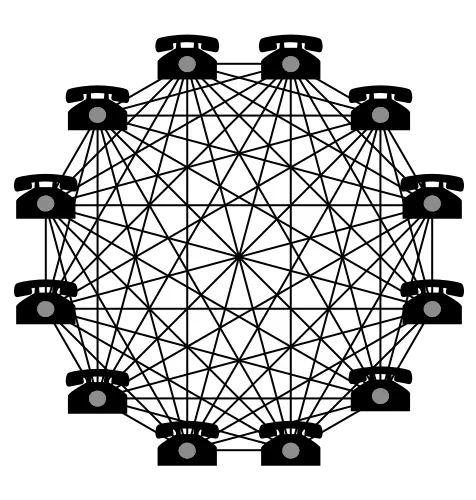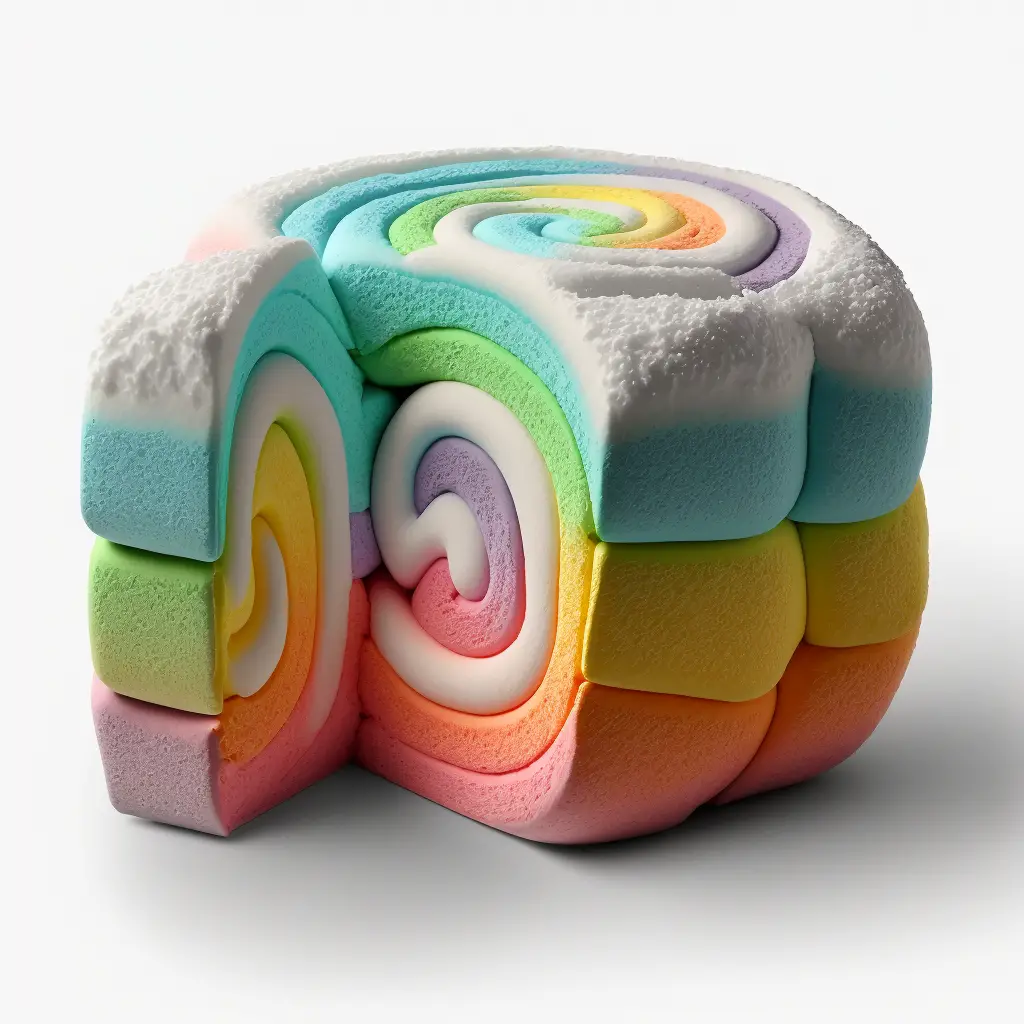
Symbols are everywhere. You see them on billboards and in magazines and all over text messages from young whippersnappers. They’re even hidden in seemingly mundane things like labels or license plates. But today, I wanted to explore a subject that often pops up in the medieval and fantasy fiction books I used to read all the time as a kid.
They’re called Alchemical symbols, and they’re definitely not a regular part of science class today.
And yet, the study of alchemy was par for the course for hundreds if not thousands of years. From the epic quest to create gold out of thin air, or to develop advanced materials for use in warfare, alchemy was certainly a precursor to what we know as chemistry today.
Plus, it’s super mysterious, which is always a cool thing to learn about in my books. I wanted to know more about alchemy, especially what the symbols actually mean and how these elements were determined and mixed into the field of alchemy in general.
Let’s jump in and learn more about the mysteries of the ancient study of alchemy.
What is alchemy?
Alchemy was an ancient strand of natural philosophy, which is sometimes referred to as a field of science by certain individuals. It was a protoscientific — an area of study that pre-dated the scientific method — tradition practiced all the way from China to Europe.
We even have ancient texts describing the practice written all the way back in Egypt around the 3rd century AD.
In its prime, alchemy had three main goals for its wizardly pseudo-scientists:
- Create rare “noble metals” (like gold) from common “base metals” like lead
- Create the elixir of immortality (the fabled fountain of youth)
- Create a cure-all elixir to solve all of humanity’s ailments
All of these lofty goals were connected to making one pure substance or object that could perform nearly any miracle. The name was later abused in a children’s book you probably know the name of — it was called the philosopher’s stone.
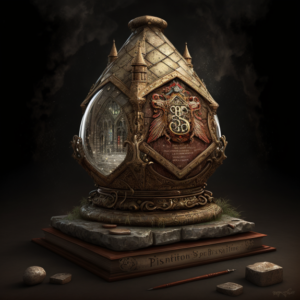
Interestingly, many of the laboratory techniques invented by these practices of alchemy are still in use today and certainly set in place the long, slow motions of what we call science today.
But part of their modus operandi back then was based in secrecy. Kind of like the “magicians” you can see on TV today. So how did they communicate? With ciphers and cryptic symbols, many of which compose the alchemy symbols we’re exploring in a moment!
Alchemists believed the entirety of nature was composed of the four basic elements:
- Earth
- Water
- Fire
- Air
As children, many of us have seen these elements as they’re a common trope in movies and TV shows like Power Rangers and Captain Earth. Lastly, there was a strong belief in a hidden connected network of spiritual beings or feelings, called essences. It perhaps was an attempt to connect science to religion, or something along those lines.
22 Alchemy Symbols and Their Meanings
Alchemists eventually created a set of pictures called alchemical symbols that were used to specify elements and compounds. The practice was still in use as a form of science all the way until the 1700s, when other more modern fields started replacing them.
While the main list is mostly standardized, symbols and artistic styles were varied among some. That leaves us with 22 key alchemy symbols divided among a few distinct groups.
They are the Three Primes, the Four Basic Elements (also known as the Four Classical Elements), the Seven Planetary Metals, and the Mundane Elements.
Let’s explore all of the alchemy symbols and what they mean.
The Three Primes
A Swiss philosopher known as Paracelsus first named the trial prima, which we now call the three primes. He thought the materials in three primes were at the root of all diseases, and, if studied, alchemists could learn how to cure every ailment. Within this context, he figured the trial prima were highly related to different parts of what makes us human.
Salt

Nowadays, of course, we know salt is made up of sodium and chlorine and has the chemical symbol NaCl. But back in the days of alchemy, they thought salt was composed of a single element. But in alchemy, salt represents the human body, physical matter, condensation, and crystallization.
They thought salt wasn’t pure when first gathered, but with different chemical processes, it could be made better or dissolved. Alchemists thought this change in form of purification was how it worked in humans, too.
Salt is now known to be a chemical compound comprised of sodium and chloride, but alchemists believed it was a single element. Salt represents the body, as well as physical matter in general, crystallization, and condensation. Salt is often impure when first collected, but through chemical processes it can be dissolved and purified, which some alchemists compared to purification processes the human body can undergo. The alchemy symbol for salt is a circle with a line horizontally cut through it.
Sulfur

Another main element in alchemy was brimstone, which we now call sulfur. In alchemy, mercury represented a passive female, whereas sulfur represented its active male counterpart. Sulfur was used throughout ancient countries as a traditional medicine thought to cure a variety of illnesses.
In the field of alchemy, sulfur represented heat, masculinity, and dryness. It was sometimes used as a representation of expansion, dissolution, and evaporation. In humans, it was simply seen as the element of our souls. And lastly, in the tria prima three primes, it was the essential element used to combine salt (which was high) and mercury (which was low).
The symbol for sulfur in alchemy is a triangle overtop of a cross. Some odd people refer to this symbol as being satanic.
Mercury

Mercury is an element that has long been associated with alchemy due to its enigmatic properties. It is often symbolized by a caduceus, a winged staff with two serpents intertwined around it. In alchemical symbolism, mercury is associated with transformation and transmutation, symbolizing the change of base metals into gold.
It is also associated with the unconscious and the inner workings of the mind, as well as being a messenger of the gods. The duality of mercury, which contains both the fiery energy of the sun and the cooling energy of the moon, reflects its ability to both create and destroy. In alchemy, mercury is used to represent the soul and its ability to unite the body and the spirit.
The symbol contains the normalized sign for “female” we often use today.
The Four Classical Elements
The four classical elements of alchemy have been a part of the philosophical and scientific understanding of the natural world for millennia. In alchemy, these four elements — Earth, Air, Fire, and Water — are believed to be the fundamental building blocks of all matter. In alchemy, they are the components of all physical objects, and as part of the spiritual process by which all life is created and sustained.
These elements are also thought to contain healing powers and are sometimes used in spiritual and medicinal practices. Alchemy’s four classical elements are an important part of the history and ongoing development of humankind’s understanding of the natural world.
Air

In alchemy, air is one of the four classical elements, along with fire, water, and earth. It is associated with the properties of being light, mobile, and changeable.
Symbolically, air is associated with the qualities of communication, intelligence, and creativity. It is associated with the breath of life and the power of movement. Aristotle thought air was responsible for heat and wetness.
Air is often seen as an intermediary between the other elements, as well as being the breath of life. As such, it is seen as representing the balance between the physical and the spiritual. In ancient alchemy, it was thought that air could be used to transmute lead into gold, and it was seen as a way to purify an impure substance.
Alchemists believed that the element of air was an important part of the cosmic balance, and that it was necessary for the creation of life. Air was believed to contain the energy of the stars, and to be able to carry knowledge from one plane to another. It was also seen as a way to bring about spiritual awakening and enlightenment.
The symbol is a triangle with a line cutting through it horizontally towards the top, and incidentally, is the same symbol for earth but inverted.
Earth

Earth is associated with physical matter and stability and is often represented by a pentagram or the color black. In alchemy, the element of earth is associated with the material world, and is seen as the foundation of all things.
Aristotle thought the element of earth stood for coldness and dryness. It is seen as the most solid of the four elements, and is associated with physical objects and material reality. It is also associated with the element of stability, as it is seen as being the most constant and unchanging of the elements. Earth is also associated with the symbol of the pentagram, which is a five-pointed star formed from five interlocking lines.
The symbol above is the same triangular symbol as air, but inverted.
Fire

Fire is an essential element in alchemy and is associated with transformation and the purification of matter. It is seen as a powerful agent of change, capable of destroying and recreating matter in order to create the philosopher’s stone. Fire is also seen as a symbol of the spiritual journey, of the purification of the soul, and of the divine spark within all of us. It’s the culmination of fiery emotions like passion and hate and love and anger.
Fire is believed to contain spiritual power, and it is through the use of fire that alchemists can access this power and transform matter. Fire is also thought to be one of the four classical elements, along with earth, air, and water. In alchemy, fire is used to turn base metals into gold, and to purify the soul.
The symbol for fire in alchemy is a simple equilateral triangle with the base on the bottom.
Water

Aristotle believed that the classical element of water was related to the idea of change. He saw it as a powerful force that could bring about transformation. He also believed that water was a feminine element because of its ability to nurture and give life. He associated water with the Moon because of its ever-changing nature and its ability to bring light to the darkness of night.
In alchemy, water is seen as a purifying agent. It is believed to be able to dissolve and cleanse away impurities and bring about a new beginning. It is also seen as a source of life, as it is necessary for the growth and sustenance of all living things.
Water is seen as the element of emotion and intuition, being cold and wet, as it is able to stir up deep feelings and instinctual knowledge. Alchemists believed they could use the power of water to bring about transformation and create something new.
The symbol for water in alchemy is an equilateral triangle with the tip facing down.
The Seven Planetary Metals
The Seven Planetary Metals, also known as the seven classical planets of the ancients, have been a part of the alchemical tradition since the time of ancient Greece. They are associated with the seven planets of the solar system, along with the seven days of the week.
Each metal is said to contain specific energies and qualities that can be used to create powerful and transformative elixirs, talismans or charms. As astronomy was strongly intertwined with alchemy, Uranus and Neptune weren’t included since they weren’t known yet.
Lead

- Planet: Saturn
- Day: Saturday
- Organ: Spleen
Lead, or plumbum in ancient times, is an important element in alchemy. Lead plays a major role in the process of transmutation, which is the process of changing the properties of one material into another. Lead is the starting point for many transmutations because of its malleability and the ease with which it can be melted and shaped.
The symbol for lead in alchemy looks like an elaborately written h, albeit with a cross through the vertical line.
Tin

- Planet: Jupiter
- Day: Thursday
- Organ: Liver
Aristotle believed that tin was one of the three elements necessary for the creation of a perfect material, or the “philosopher’s stone”, in alchemy. Along with lead and mercury, tin was believed to be a key component in the ultimate synthesis of a perfect material.
The ancient alchemists believed that by combining these three elements, a material could be created that would be resistant to all forms of corrosion, as well as being able to transmute any other material into gold. Aristotle believed that tin had the ability to purify other elements, making it essential in the creation of the philosopher’s stone.
The symbol for tin in alchemy looks like you wrote the numbers 2 and 4 at the same time.
Iron

- Planet: Mars
- Day: Tuesday
- Organ: Gallbladder
Aristotle believed that iron was one of the four essential elements in alchemy. He believed that iron represented strength, stability, and durability, and that it was the key to understanding the universe.
The symbol for iron in alchemy is what we know as the symbol for males today, a circle with an arrow in the top right corner pointing up and to the right.
Gold

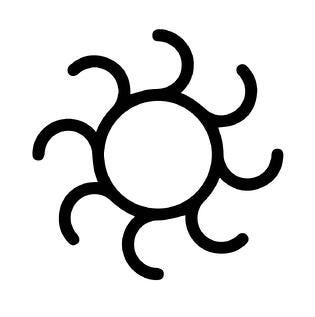
- Planet: Sun
- Day: Sunday
- Organ: Heart
In alchemy, gold was seen as the perfect metal and the ultimate goal of alchemical transmutation. It was seen as a symbol of incorruptibility, enlightenment, and spiritual perfection and was one of the more common symbols used. Alchemists constantly strived to turn lead into gold (and failed).
There are two symbols for gold in alchemy, with the first being a simple circle with a dot in the middle. The second symbol for gold is a circle representing a sun and many half circles facing right, representing the rays of the sun.
Copper


- Planet: Venus
- Day: Friday
- Organ: Kidneys
In alchemy, copper was associated with being a feminine metal. It was believed to bring emotional balance and physical strength and was associated with the goddess and planet Venus. It was also used in a number of alchemical processes and was believed to be able to purify and transform other substances.
In alchemy, there are two symbols for copper. The first is a complex series of lines and small circles. The second is what we know as the female symbol today, which is a cross below a circle.
Mercury

- Planet: Mercury
- Day: Wednesday
- Organ: Lungs
In alchemy, mercury was believed to be the symbol of transformation and the bridge between the physical and spiritual realms. It was thought to be the source of life, and many alchemists were devoted to uncovering its mysteries.
Mercury was also believed to represent the soul, and it was said to be the medium through which one could transmute base metals into gold.
The symbol for mercury in alchemy is the symbol for females with a half circle facing upward on top.
Silver

- Planet: Moon
- Day: Monday
- Organ: Brain
In alchemy, silver was seen as a symbol of purity, wealth, and the feminine principle. It was also believed to represent the moon and its related lunar cycles. Silver was believed to have the power to transform base metals into gold and was also associated with intuition, psychic powers, and the ability to access hidden knowledge.
In alchemy, the symbol looks like a crescent moon facing the left.
Mundane Elements
The remainder of the alchemical elements are usually called the mundane elements, but there are a few additions. They also don’t have as many records or history for modern-day researchers to explore and learn from.
The main remaining elements and mundane elements in alchemy are antimony, arsenic, bismuth, magnesium, potassium, phosphorus, platinum, and zinc.
Antimony

Antimony is an element that was historically used in alchemy as a precursor for transmutation. It was believed to be a cure for many ailments and was also used in the manufacture of various medicines. Antimony was also thought to be a link between the physical and spiritual worlds, and was used in rituals to connect with spiritual forces. It represents the wild side of humans and what we do daily.
The symbol for antimony in alchemy is the symbol for females, but upside down. It’s a circle with a cross above it.
Arsenic

Arsenic is a poisonous substance that was commonly used in alchemy in the form of salts. It was believed to have transformative properties and was used in the transmutation of metals. It was also believed to be a powerful remedy for certain illnesses.
The symbol for arsenic in alchemy is a series of connected triangles.
Bismuth
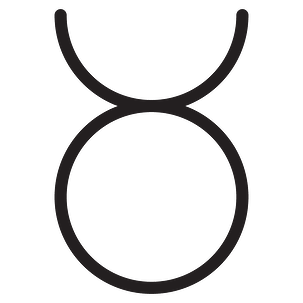
Bismuth is a metallic element associated with the alchemical element of Earth. Bismuth is thought to represent physical and mental stability and a connection to the spiritual realms. It is also believed to represent transformation and balance.
The symbol for bismuth in alchemy is a circle with a half circle facing upwards on top of it.
Magnesium

Magnesium is a symbol of transformation and purification in alchemy. It is associated with action and spiritual evolution, as well as the transformation of base metals into gold.
Alchemists actually used magnesium carbonate, or magnesium alba, in the past as they couldn’t find the substance in its purest form. It also represents the idea of eternity since it’s hard to put out once lit on fire. While there are several symbols for magnesium in alchemy, the one above is a D with an artistic arrow going through it to the right.
Phosphorus

In alchemy, phosphorus was believed to have properties related to the transmutation of metals, and was part of the creation of the mythical “Stone of the Wise”. It stood for the spirit and was thought to be able to capture emitted light.
The symbol for phosphorus in alchemy is a triangle above a cross with two horizontal lines.
Platinum
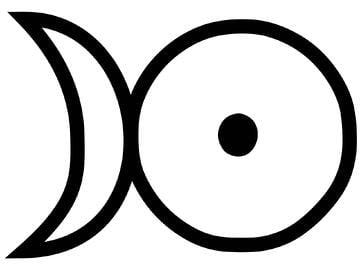
Alchemists thought when you combined gold and silver, you’d get the element of platinum. The symbol for platinum is a left-facing crescent moon attached to a circle with a dot in the middle on the right.
Potassium
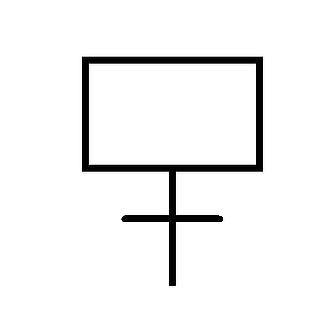
In alchemy, potassium is a symbol of destruction and transformation. It is associated with the power to break down and rebuild physical matter, as well as to break down boundaries between the physical and spiritual realms. Alchemists used potassium carbonate, or potash, since they couldn’t find a natural form of potassium in nature.
The symbol for potassium is a rectangle over a t shape.
Zinc

In alchemy, zinc is a metal associated with creativity, intellect, and communication. It is also associated with the feminine or the moon, and is thought to be a purifying agent. Alchemists created a form of the element they called white snow and philosopher’s wool, which was simply burned zinc oxide.
The common alchemical symbol for zinc is a Z with a short vertical line through the bottom.
Summary: Alchemy Symbols and Meanings
Alchemy symbols are an intriguing and mysterious part of our history. They represent a fascinating part of human knowledge that is still being studied today.
From medieval manuscripts to modern-day tattoos, alchemy symbols can be seen in many different forms. These symbols are deeply rooted in the history of humanity and are an essential part of understanding the past.
While much of the meaning behind these symbols still remains a mystery, they will surely continue to captivate us for generations to come.
If you thought this was neat, maybe you’d like to find out what zodiac symbols are the ugliest?


